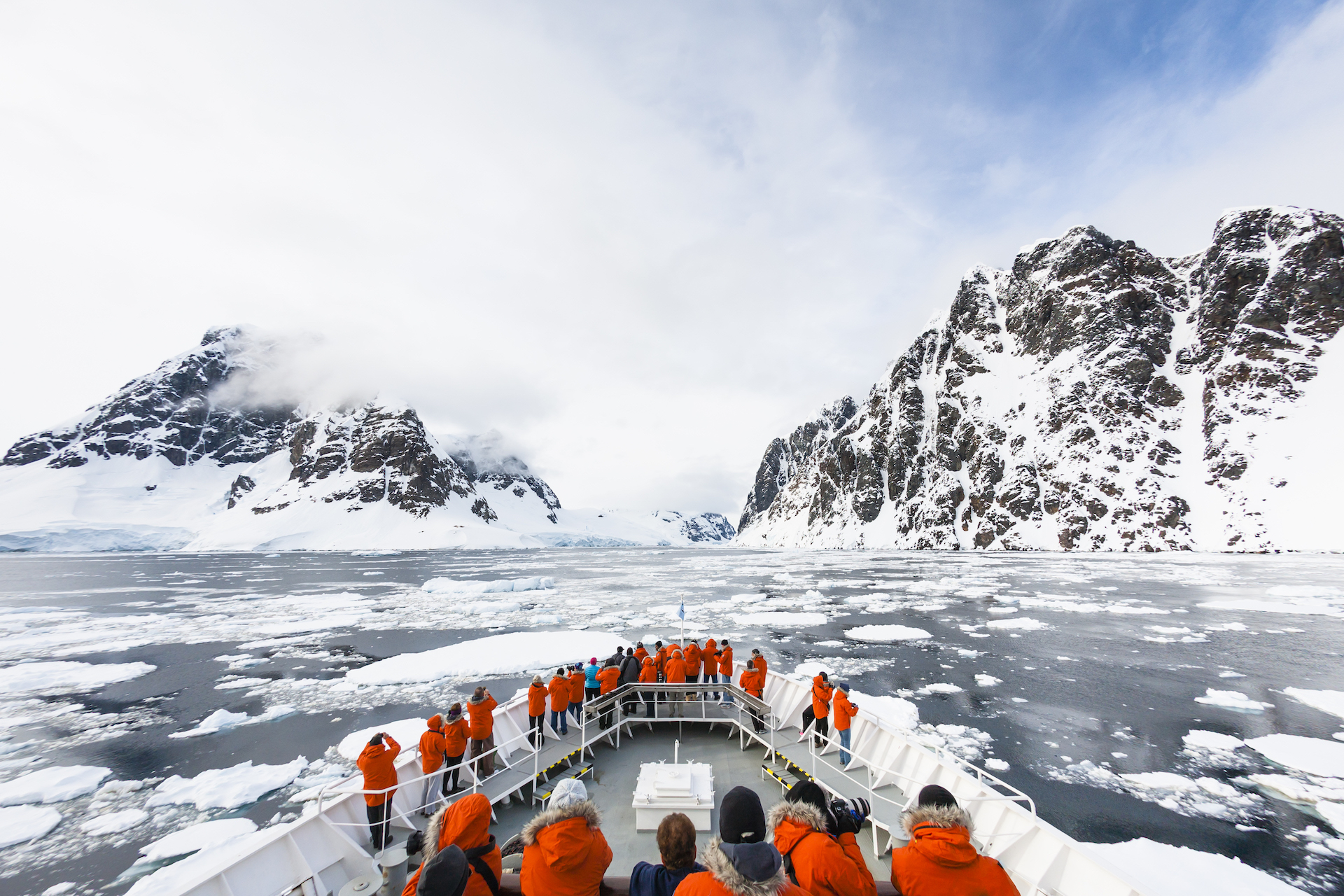Will Antarctica ever be habitable?
As global temperatures rise, the ecology of Antarctica is already changing, but Earth's climate would have to change drastically before the continent could support agriculture and permanent settlers.
Antarctica is a freezing, inhospitable place, with average winter temperatures that plummet to minus 56 degrees Fahrenheit (minus 49 degrees Celsius), winds that reach 200 mph (321 km/h) and just 6.5 inches (166 millimeters) of annual precipitation. It's no surprise, then, that Earth's southernmost continent is also its least populated, with only a handful of scientists doing research there and no permanent residents.
But considering technological advances and the changing climate, could that ever change? Will Antarctica ever support the kinds of permanent human settlements seen elsewhere on Earth?
While a select crowd of invasive plant and animal species are already moving to a warming Antarctica, humans aren't on that list yet, and likely won't be until at least the next century. In part because the current climate and terrain don't sustain a range of biodiversity for crops or animals for food.
Another obstacle is Antarctica's remote location. Although the environment is far from comfortable, it's not too different from some places in the Arctic — such as Greenland, Iceland, and higher latitude areas of Norway, Russia, Canada and Alaska in the United States — that support permanent residents. If the only issue were the weather, people might stand a chance there for the long term, Steven Chown, a professor of biological sciences at Monash University in Australia, told Live Science. Bu its geographic isolation means these facilities are sustained only by importing food and other goods.
Some, but not all, of the research stations are currently supported by renewable energy from wind turbines and solar panels. Building a power grid across the continent would mean building across an ice sheet, which is liable to change due to the effects of global warming. A power grid would not be necessary if all the stations there mainly used solar and wind, while advances in battery technology could be used to last through the dark winter months, Julie Brigham-Grette, professor of quaternary/glacial geology and Arctic paleoenvironments at the University of Massachusetts, told Live Science in an email.
Related: When did Antarctica become a continent?
Antarctica's climate: the distant past and near future
The frozen continent might not be equipped for permanent residents right now. But was the climate ever hospitable, and will it be in the future, given that the planet is warming?
Get the world’s most fascinating discoveries delivered straight to your inbox.
"Based on the fossil record, it used to have a climate that was perfectly suitable for forests and dinosaurs," Chown told Live Science. About 100 million years ago, Antarctica supported well-developed vegetation, substantial forests, and a range of organisms, such as conifers, ferns and flowering plants known as angiosperms. In 2021, charcoal remnants found on James Ross Island — a part of the Antarctic Peninsula below South America — provided evidence that wildfires burned forests there during the late Cretaceous period, between 100 million and 66 million years ago.
Earth's climate changes over hundreds of millions of years, cycling between cooler glacial periods and warmer interglacial periods. To understand what Antarctica's climate might look like in the future, paleoclimatologists look to its distant past. By studying the layers of sediment in the Ross Ice Shelf, a team of researchers, including Brigham-Grette, found that the West Antarctic Ice Sheet has collapsed and regrown several times. Such collapse and regrowth probably correlate with extremely warm interglacial periods, Brigham-Grette said, and these climatic fluctuations go hand in hand with changes in Earth's atmosphere, including rising and falling levels of carbon dioxide.
Although these changes historically have happened over hundreds of thousands of years, greenhouse gas emissions are now changing Earth's climate at an unprecedented rate. If we do not reach net-zero emissions by 2040, climate change "will be the single largest driver of change to the Antarctic," Chown said. To imagine the kind of environment that might emerge as temperatures continue to rise, Chown recommended looking to the sub-Antarctic islands and the ecology of the southernmost parts of South America.
The Antarctic Peninsula is one of the highest latitude, or northernmost parts of the continent, stretching out of the Antarctic Circle toward South America. Ushuaia, Argentina is just 680 miles (1,095 kilometers) away. As global average temperatures rise, the climate on the Antarctic Peninsula will change, making it likely to resemble the southernmost parts of South America, or islands in the seas nearby, Chown said.
On the Antarctic Peninsula, native grasses, a few insects, migratory birds and marine mammals currently survive. With a warming climate, we are likely to see a greater variety in grasses and flowers, Chown said. If this trend continues, in the near future, higher temperatures and increased rainfall will stimulate plant growth, Chown said. Along with invasive species accidentally transported there by humans, more plants may establish themselves there. However, the cold temperatures mean it's unlikely that we will see forests there anytime soon. Chown and Brigham-Grette agreed that Antarctica is unlikely to support any crops or livestock during the next century. All in all, we are unlikely to be able to create permanent human settlements there, sustained by agriculture or livestock, in the immediate future.
The Antarctic climate is already changing however. Chown said the rise in average global temperatures is altering the continent's ecology. Poa annua, a bluegrass found in temperate cities such as Cape Town, South Africa, and Melbourne, Australia, has been found in Antarctica, he said. Even a gentoo penguin colony spotted in Antarctica in early 2022 is cause for concern, as these non-ice loving birds typically live in sub-Antarctic islands and are likely venturing south only because climate change is warming the southernmost continent.
Related: What countries and cities will disappear due to rising sea levels?
Melting ice sheets
Aside from the Peninsula, most of the continent is an ice sheet, several kilometers thick in places. Climate modeling predicts a large growth in the ice-free area. But, according to Chown, "at the highest areas where just the mountain peaks stick up…we're unlikely to see anything that changes by say, 2100."
The melting of the Western Antarctic Ice Sheet and the consequent rise in sea levels, will change not just the geography of Antarctica, but the climate of our entire planet. "Most of West Antarctica is below sea level," but rising sea levels would also elevate small rocky islands there, rather than totally inundating them. "As we lose the ice shelves in the future, one issue will be making sure the settlements are above sea level," Brigham-Grette said.
Looking past 2100, rising temperatures and sea levels are likely to accelerate the migration of climate refugees. People may seek to colonize the Antarctic if its cooler climate remains more hospitable than hotter parts of the world. Even without growing crops, melting sea ice may mean people will attempt to fish in the area.
But despite our attempts to explore and study Earth's harshest, most inhospitable continent, we're unlikely to have Antarcticans anytime soon.

Martin McGuigan is an Irish writer based in Norwich, England. His work has appeared in The Mays XIX, Cabinet of the Heed and SHE magazine. His writing explores the bizarre questions of everyday life, the mysteries of human psychology, and environmental issues. He studied English literature at the University of Cambridge and creative writing at the University of East Anglia.




